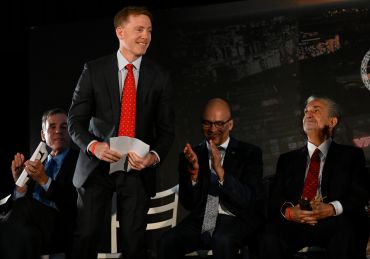Solid investment in buildings in the area has yielded results for other landlords. Mark Ravesloot, a vice chairman at CBRE (CBRE), recently handled a number of recent deals at 100 William Street, an office building owned by the Japanese real estate investment company Mitsui Fudosan. Mr. Ravesloot said Mitsui poured millions of dollars into updating the building’s lobby, elevators and other renovations. As a result, Mr. Ravesloot and his team have been able to lease over 200,000 square feet at the property in the two years since the overhaul was done, bringing it to near full occupancy—even as activity market-wide has slowed over the past year.
Even more vacancy could come available Downtown if a large deal with the advertising and media firm GroupM comes to fruition at 3 World Trade Center, an over 2-million-square-foot building that would proceed if the company decides to anchor it—a commitment it has been rumored to be considering.
As big block after big block awaits the market, the pace of large-sized deals has ominously slowed. According to CBRE, there are currently 14 blocks of space larger than 100,000 square feet in Lower Manhattan, compared with eight a year ago. So far this year, four deals in excess of 100,000 square feet have been signed, totaling 770,000 square feet of leasing. Last year, eight deals in this size category were completed during the same period, accounting for over 2 million square feet of leases.
The lack of big deals, the prospect of a glut of space and the heightened competition among landlords would appear to underscore the sizeable investment Brookfield (BN) is making at the World Financial Center and its decision to change its moniker.
“They are definitely facing a challenge,” one veteran Downtown leasing executive said, asking for anonymity because he was wary to openly disparage the area’s biggest landlord.
But there is a flip side to Lower Manhattan’s predicament. The neighborhood has long offered tenants a substantial discount to Midtown. Now, with the popularity of Midtown South and the rent spike there that has resulted, it can effectively undercut a whole new segment of the city.
“The thing about the vacancy Downtown is that this is great space, first-rate Class A product, and it’s going to be attractive to tenants,” James Delmonte, an economist at the services firm Avison Young said.
“A decade ago, a lot of the vacancy was in buildings that were antiquated and that were eventually converted to residential. It’s not clear what the pricing at the World Financial Center is going to be ultimately, but it could be an affordable opportunity, and there are always going to be tenants who will take a deal like that.”
dgeiger@observer.com


